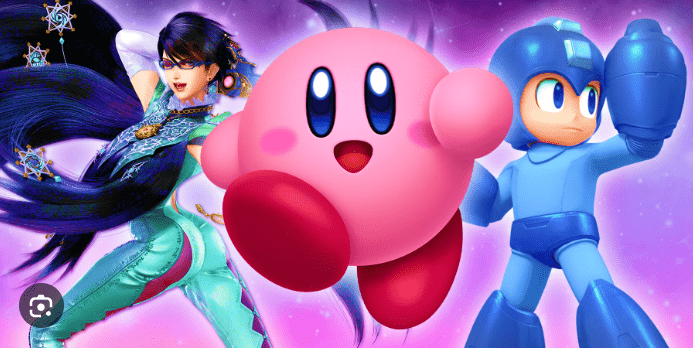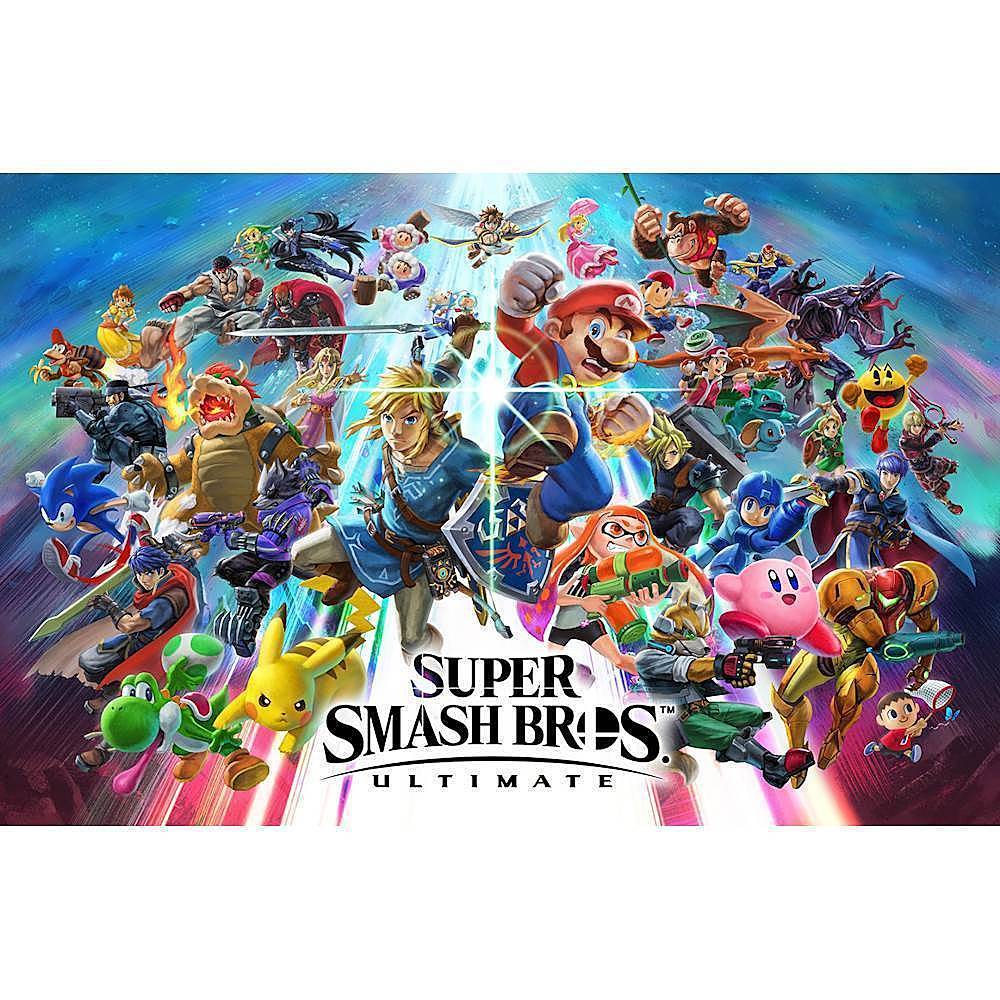For this critical play, I played Super Smash Bros Ultimate (or “Smash”) on the Nintendo Switch. This game is the latest in the Super Smash Bros series, and was released on December 7, 2018. The game was developed by Bandai Namco Studios and Sora Ltd., and was published by Nintendo. I believe that this game has an intended audience of male teens and adults, but the audience has grown out of this initial group. To play this game as a feminist, I believe we have to look at both the surface level aspects (Character design/art, agency, mechanics) and the underlying aspects (Representation of characters, the games characters are pulled from). By doing so, we can come to some critiques of the game such as underrepresentation of female characters and the reliance of the tier system in character publicity. I find that this game touches on feminist elements mentioned in the book in both positive and negative ways and some improvements that can be made throughout this critical play.
One of the most obvious elements of Smash related to topics mentioned in the book is the underrepresentation of playable female characters in the game. Out of the 70+ playable fighters in the game, only a small fraction are canonically female characters. Already this makes it so that there is a lower probability of seeing or playing a female fighter in game. However, one notable feature of Smash is the uniqueness of each playable fighter. Some characters fit into traditionally feminist archetypes and are designed in the game with softer features such as Princess Peach or Princess Daisy, while others, like Sheik or Bayonetta, showcase a different view. This brings a new dimension undermining existing beliefs to the game where characters like Princess Peach have strong physical attacks unlike her design. One issue I see with the current pool of characters is the lack of diversity. Due to the sheer number of male characters, they span a wider, more diverse range of characters in design than the female characters, where many are portrayed with blonde hair and blue eyes or have over-sexualized design.

Another notable element of Smash is how the “meta” or current tier list dictates the characters played in both casual and professional scenes. As with all competitive games, players are constantly coming out with tier lists and rankings for all the Smash fighters and I argue that this aspect, although it may be unintentional, results in certain characters being omitted from the public view. In other words, if the meta of Smash is centered around male characters, this pool of fighters will probably be the only ones intentionally publicized online. In the reading, it was mentioned that one of the big problems resulting in the lack of females in the gaming scene is that they simply don’t know of the games that are being mentioned. In a similar vein, I believe that if Smash, or any game for that matter, only advertises certain characters, new players will not even know that others exist. In the context of Smash, in a male-character dominated meta, new potential Smash players may be turned off by the lack of female characters and not approach the game. Of course, this claim works in both directions in that if the meta is primarily dominated by female characters, male characters wouldn’t be seen as much. However, both anecdotally and historically, it feels as though the “top” playable characters are usually male-dominated, which also fits probability-wise as a higher base pool of male characters results in a higher pool of “high tier” male characters. This issue doesn’t have any obvious solutions but I believe that intentionally adding more female characters to balance the gender ratio, both well-known or not well-known but potentially made by female designers/developers, is a way to make approaching the game less daunting for new players. This would help add more “entry points” for feminist players to get pulled in.
A unique aspect of Smash is the relation between the identity of the characters and their functionality in game. In some games, such as Fortnite or Minecraft, you are able to play as gendered characters and skins without any change in gameplay. However, in Smash, characters are directly tied to their move set. On one hand, this makes sense as characters are given abilities and skills related to the game that they are originally from. However, I argue that this system reinforces and perpetuates gender constructs that exist in the original games, and the gaming scene in general. As mentioned in the reading, “intentionally” feminist games seems to be a relatively new concept in the gaming scene, and the earliest public iterations of it even resulted in huge conflicts (i.e. GamerGate). While we cannot attribute all Nintendo games of being “anti-feminist”, I find that many of the playable characters in Smash come from games that over-sexualize female characters or put them into less positive roles. For instance, characters like Samus and Bayonetta are designed with tight-fitting or revealing clothes, and characters like Princess Peach historically play the role of the “maiden who needs saving” usually by a male character. On the other hand, one could also argue that putting these characters on the same playing field, both physically and figuratively, is a way of empowering them from their original role in games. I believe that in either case, the fact that the character identity is tied to the physical mechanics or agency of the fighter means that each character is forced to be put into the “constraints” given by the developer rather than the player.
An extreme change that could be implemented is removing the “identity” from each playable character and instead making all fighters customizable like the “Mii” fighters. Mii fighters are a unique element in Smash in that players can design Miis to look however they want, then design their skill/ability set individually. In a similar manner, if players were given a list of possible abilities and skill sets and were able to equip any character skin, perhaps this would result in seeing less of the same characters (Princess Peach with Donkey Kong’s moveset or Mario with Bayonetta’s moveset). One way that this has already been implemented is with the customization of skins for each character. For some characters, you are able to choose either a male or female version of the character.
As a discussion question, I would want to ask, “For games in which character background is integral to the game (i.e. Super Smash Bros Ultimate which pulls well-known characters into the game), can there be a balance between designing characters to be true to their original portrayal while still promoting feminism?”



